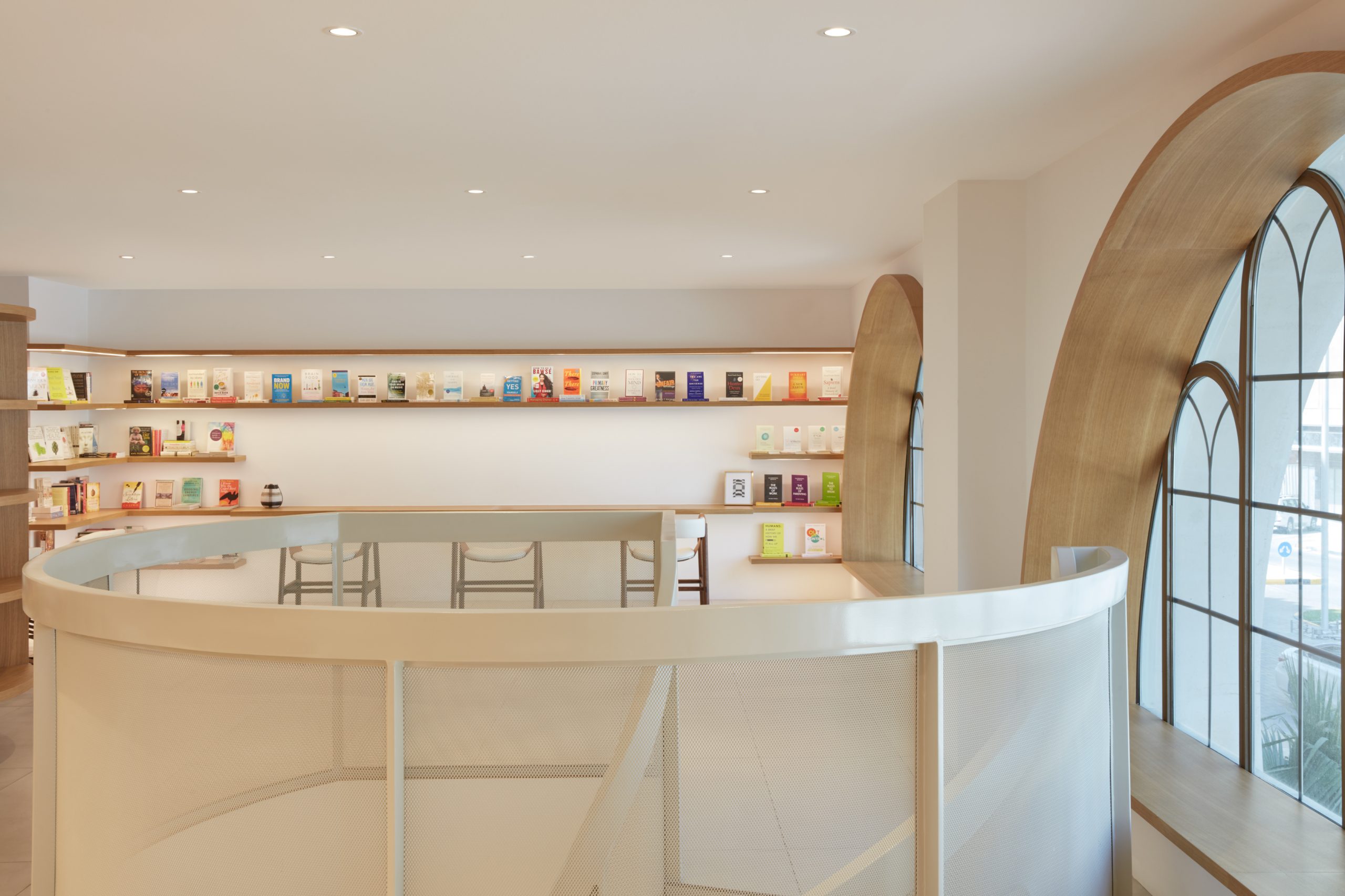Copyright © 2025 Motivate Media Group. All rights reserved.
NAKKASH Design Studio’s book store in Sharjah showcases an interplay of reflective materials
The new space in Al Qasba aims to appeal to multi-generational readers

NAKKASH Design Studio has completed the AMZAN bookstore in Sharjah‘s Al Qasba neighbourhood, creating a minimal multifunctional space designed to allow the books to take centre stage.

Photography by Oculis Project
The literal translation of ‘Amzan’ from Arabic to English is Nimbostratus, a word that derives from the Latin ‘nimbus’ meaning rain and ‘stratus’, meaning to spread out. AMZAN is designed to reference the analogy between the nourishing power of rain and the spread of knowledge from books. Just as rainwater can cultivate a forest, so too can a bookstore spread knowledge to the community.

The concept and subtle manifestation of rain within the design language reveals itself through the carefully selected clear and reflective materials that are offset with patterned concrete tiles and light wood that alleviate the space and create an added sense of serenity to the overall environment.


“The materiel palette derived from AMZAN’s identity is an interplay of reflective surfaces and translucent elements to provide multiple spatial and sensorial experiences,” said founder Omar Nakkash.
The design studio incorporated muted architectural components into the interior, allowing the books to take centre stage.

The Arturo Alvarez Fluo pendant lamps, which are crafted from very fine sheets of painted steel-mesh wrapped together to create the illusion of fabric, were used to create a soft lightweight appearance of clouds. Also present is the Vu modular wall mirror by Tonelli made of extra clear glass strips of different thicknesses that have been welded together on a mirror back, as a backdrop for the reception area.

“This is a mirror, but not in the traditional sense, as its reflective surface is relegated under a layer of glass, which transcends its original function. This feature is imagination at its best, what you get is a surface that captures the single image and reflects its thousand sides whilst magnifying and enhancing the room, mimicking the effect of rain droplets,” Nakkash explained.

The ground floor contains the majority of the books on display as well as a link to the café, while the upper level serves as a multi-functional area for kids that is flexible enough to host talks and workshops.

“One of the key areas of the project from a design perspective was the staircase. It was challenging because we needed to close the existing opening and cut-out a bigger one for the spiral staircase, however, the existing first floor structure had to be reinforced,” Nakkash said.

Commenting on the ability of book stores to create a sense of community, he said: “The industry has been incessantly proclaiming “the end of bookstores” for years now, however, this is not entirely true. Book-buying behaviour is not just a function of book prices and inventory size but also the experience of discovering and purchasing itself.


“The client believed that there is still a place for independent bookstores today, and requested to design a space appealing to multi-generational readers. A book store is more than the sum of its stocked shelves. They are without a doubt not only highly useful in the community, but also contribute to the flowering of culture and literacy.”
The Latest
Design Take: Inside the Royal Suite at Jumeirah Al Naseem
With sweeping views of the ocean and Burj Al Arab, this two bedroom royal suite offers a lush stay.
Elevated Living
Designed by La Bottega Interiors, this penthouse at the Delano Dubai echoes soft minimalism
Quiet Luxury
Studio SuCo transforms a villa in Dubailand into a refined home
Contrasting Textures
Located in Al Barari and designed by BONE Studio, this home provides both openness and intimacy through the unique use of materials
Stillness, Form and Function
Yasmin Farahmandy of Y Design Interior has designed a home for a creative from the film industry
From Private to Public
How ELE Interior is reshaping hospitality and commercial spaces around the world – while staying unmistakably itself
A collaborative design journey
A Life By Design (ALBD) Group and Condor Developers have collaborated on some standout spaces in Dubai
New Episode: In Design With: Ahmed Bukhash
Watch the latest episode on In Design With.
Highlights of the Biennale Architettura 2025
We shine a light on the pavilions from the Arab world at the Venice Architecture Biennale, on display until Sunday 23 November 2025
Read ‘Bold Design’ – Note from the editor – July/August 2025
Read identity magazine's July/August 2025 edition on ISSUU or grab your copy at the newsstands.
Things to Covet
Elevate your spaces with a pop of colour through these unique pieces
Designing Spaces with Purpose and Passion
We interview Andrea Savage from A Life By Design – Living & Branding on creating aesthetically beautiful and deeply functional spaces
















